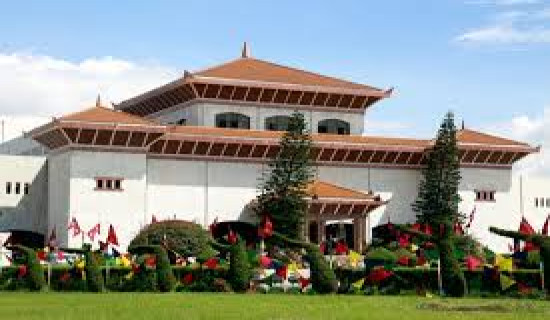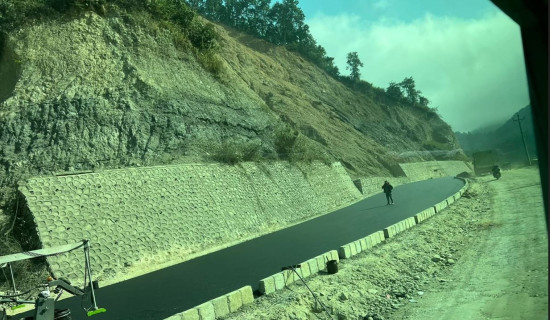- Sunday, 14 December 2025
Ensuring Effective Disaster Response
During the monsoon season, whenever there is flooding or landslide, we hear stories of gaps in relief assistance and a lack of coordination among different stakeholders. As a result, much-needed relief support does not reach the neediest population timely. In Nepal's changed governance context, all three levels of government and other actors are engaged in disaster preparedness and response. Notably, localised disasters are managed by the local bodies. However, they have limitations when it comes to dealing with disaster-scale incidents. That is where provincial and federal governments come in. The involvement of all these governments often creates confusion, making emergency responses messy and complicated.
For example, during the 2021 Melamchi flooding or the 2019 wind storm in Bara-Parsa, all three levels of government were responding one way or the other. In some instances, there was redundancy in the decision-making process and the implementation of decisions. The local governments of disaster-hit areas start organising relief responses from the onset of the disaster, but the announcement of relief packages by all the governments creates a sense of confusion.
Exclusive powers
The constitution has entrusted the local levels with exclusive powers and jurisdiction in disaster management. This is a significant opportunity to advance a people-centred approach. And the Local Government Operation Act, 2017 has institutionalised the local government's mandate in disaster management. Similarly, the National Disaster Risk Reduction and Management Act, 2017, has also articulated the local disaster risk governance structure.
With the federalisation of the country's political, administrative, and financial systems, it is moving from a centralised coordination system to an inter-governmental and network-based disaster response coordination system. If the local capacity is exhausted, the provincial and federal governments step in and facilitate across multiple jurisdictional boundaries. The elected local representatives have brought the government closer to people, and their demands and needs are well reflected in public policy-making. They have re-centred coordination, bringing it closer to the people in need rather than the people serving them. Consequently, disaster-affected communities and frontline workers are increasingly participating in the local decision-making process.
Most disasters are local phenomena. The use of local information, knowledge, and resources is critical for effective preventative measures. For this, the local levels are best placed to implement the preparedness, including risk mapping, enforcing building codes, and land zoning. The local elected representatives are accountable to their constituents. They can mobilise local resources and expertise and work with the communities in disaster preparedness. Competition between local levels over the delivery of services and making their own communities more resilient can also lead to a greater outcome in disaster preparedness. This should guide all the disaster relief distribution as the ward members are closely connected with the communities and are familiar with the situation.
Given Nepal’s vulnerability to different hazards and climate crisis, there is a dire need for a robust, efficient disaster response mechanism at the local level. Further defining the roles and responsibilities and articulating the response threshold level between the federal, province and local levels can help resolve some of the coordination-related issues. Additionally, the local levels need to assess their capabilities and become self-sufficient in fulfilling the constitutional responsibility of protecting their residents and meeting their needs.
In every disaster, community members and local governments are the first responders. They manage the crucial time of live-saving in the initial phase of the disaster. The live-saving period requires a quick and immediate response. As the local governments are close to communities, they can quickly mobilise resources, whereas response from the provincial and federal governments may take hours or even days to start, depending on the geographic location. Interestingly, local politicians who want to gain political capital have strong incentives to participate in relief and rescue efforts. It is imperative to build the capacity of the local levels and enrich their expertise in disaster management.
There is a strong need for strengthening the local levels for disaster management. The UN Conference on Disasters in 2005 identified the role of government as a precondition for effective disaster risk reduction. The COVID-19 pandemic has vindicated the efficiency of local leadership, ownership and accountability in dealing with the crisis. Provincial and local governments were flexible in mobilising resources to respond to the population's health-related and socio-economic needs. While full implementation of federalism is a gradual process, the devolution of power to local and provincial levels have been proven in crisis management, particularly in making decisions and mobilising resources quickly to save lives.
Fiscal responsibility
The local levels could be capacitated by establishing the Local Emergency Operation Centre (LEOC), which is responsible for mobilising and coordinating the fire brigade, ambulances, and paramedics. The LEOCs can serve as a 'one-stop centre' in emergency response and coordinate in collecting and disseminating disaster information across the governments, controlling and stabilising the disaster situation, and commanding the relief efforts. All three-tier governments must enhance disaster preparedness to protect lives and livelihoods from reccurring natural disasters and untimely and unprecedented crises.
Also, there is a need to forge effective partnerships and working relationships between the government bodies and humanitarian partners, as envisaged in the disaster preparedness and response plans at different levels. Characteristically, disaster responses focus on addressing immediate issues rather than managing disasters sustainably. Once the initial crisis period is over, continued work related to disaster risk management tends to be overlooked. The local levels, being close to people, are more efficient in mitigating disaster risk than federal and provincial governments. Greater fiscal responsibility makes local governments more accountable to their citizens. Local people gather more information about the government's actions when financial issues are involved. Moreover, the federal government also considerably increases monitoring when it transfers huge funds to the local government.
(A seasoned humanitarian professional, Awasthi had worked with the UN for more than 15 years in humanitarian coordination. @preawasthi (Twitter handle)
















